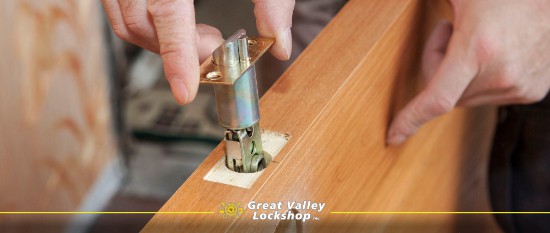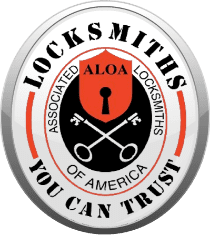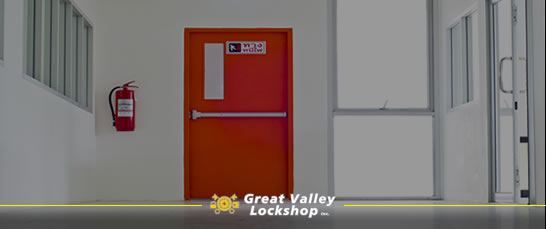
The Ultimate Guide to Panic Hardware
In the world of commercial hardware, safety is always a major concern. Tragedies throughout history have taught us the importance of providing quick, easy exit for occupants of a building.
In case of a fire or other emergency situation, safe egress can actually save lives. Panic bars play a key role in ensuring that people can exit from a building when needed.
Below, we have provided a clear guide for business owners and facility operators about the specifications and required applications for panic bars.
What Is the Purpose of a Panic Bar?
If an emergency occurs in a crowded facility, occupants have a tendency to panic and inundate the nearest exit. Panic bars enable occupants to exit quickly and easily, decreasing the risk of injury and confusion.
How Does Panic Hardware Work?
Panic hardware is an emergency exit device installed on commercial doors, emergency exits, and fire doors which allows fast and easy egress. Also known as a crash bar, push bar, or panic device, this mechanism unlatches the door without the need of a key, twisting, pushing levers, or any other unlocking maneuvers. The spring-loaded crossbar or touchpad is fixed horizontally across the interior side of the door. This makes it easy for occupants to see the device and use it to open the door outward.
What Are the Benefits of Panic Hardware?
- Safety
- Affordability
- Accessibility compliance
- Efficient exit for high capacity buildings
What Are the Regulations for Panic Bars?
Unless your company is rather small with few employees present daily, at least two fire exits are mandatory, and more are required for large businesses. The Department of Labor and Occupational Safety and Health Administration (OSHA) regularly inspects the functionality of these doors in the workplace and has strict compliances in place dictating how these doors must be installed and marked.
Panic doors must be able to be opened from the inside without a key, hardware must meet certain standards within compliance of the American National Standards Institute (ANSI), and also comply with other national, state, and local fire codes to pass inspections. You should also consider making sure the hardware you choose to install meets or exceeds recommended fire ratings by the researchers at Underwriter Laboratories to ensure that they will function optimally during actual fire situations.
What Are the Specifications for Panic Bars?
This type of hardware must meet certain specifications and be installed on certain types of buildings. Here is an outline of the main specifications for panic bars:
- The crossbar or touchpad part of the hardware must span at least half the width of each door. On balanced doors, where the pivot point is closer to the center of the door, a push-pad panic device is needed and must not span more than half the door’s width.
- Panic hardware must be mounted at a certain height: between 34 and 48 inches above the floor or threshold of the building.
- No other locking devices – including chains and padlocks – can be used on exit doors with panic hardware. For safety purposes, nothing should inhibit egress or keep occupants from opening the doors in case of an emergency.
- It can’t require more than 15 pounds of force to unlatch it.
- This hardware must be ADA compliant to ensure accessibility for those with disabilities.
- Panic hardware is required with delayed egress and controlled egress exit points.
- Panic bars installed on fire doors must be certified fire hardware. These doors are clearly labeled by manufacturers: “Fire Door to be Equipped with Fire Exit Hardware.”
- Some codes require that panic hardware also be tested for resistance in the case of hurricanes or tornados.
What Types of Buildings Need Panic Hardware?
Building codes and Life Safety codes determine what kind of panic hardware must be utilized in specific commercial settings. These codes only apply to doors that lock. Most jurisdictions have adopted the International Building Code (IBC) guidelines but you should also check if there are different state or local requirements which may apply in your area.
Panic bars are required on facilities that are intended for assembly, educational, or high-hazard activities. The IBC calls for panic hardware on buildings with an occupancy load of 50 people or more; the National Fire Protection Agency requires it for buildings able to hold 100 people or more. High-hazard facilities containing electrical equipment with certain specifications are bound by the National Electric Code to provide panic hardware on any building regardless of occupancy numbers.
“Because of its durability and ease of use, panic hardware is commonly installed in places where it isn’t required by code. But despite its popularity, the question, ‘When is panic hardware required by code?’ is one that many specifiers continually struggle with because there is no simple answer.” – Allegion
Generally, residential, commercial and retail buildings don’t demand this special type of hardware unless they meet or exceed these assembly occupancy load standards. This means that most offices, apartment buildings, and stores do not need to install panic hardware.
Watch this video to learn more about the code standards for panic hardware.
What Types of Doors Use Panic Bars?
Panic hardware can be used with single doors or pairs of doors. They are used in combination with free egress, delayed egress, and controlled egress or controlled access doors. Panic hardware can only be installed on fire doors where panic bars are required if the hardware is also certified for safety in fire conditions.
Where Are Panic Bars Required?
According to the building safety and fire codes, these are the types of facilities that would require panic bars and hardware to be installed to facilitate fast and easy egress:
- All facilities for assembly, education, childcare, and high-hazard applications with an occupant load of 50 people.
- All buildings with an occupancy of 100 people or more.
- For service areas containing high-powered electrical equipment.
With a few exceptions, when a door is part of a means of egress from one of these types of buildings AND the area exceeds the set occupant load, the door can only have a lock or latch if it is panic hardware.
Do exit doors need panic bars?
Yes, panic bars are required by building and fire codes for emergency exits. Most commercial buildings need at least two exit doors equipped with panic hardware within the designated exit route to comply with safety regulations.
What Types of Locks Can be Utilized with Panic Hardware?
Panic Hardware can be used with both fail-safe and fail-secure locks. Crossbars and touchpad style hardware can work with a wide range of lock types, including automatic locks, electrified locks, and traditional mortise locks. With electromagnetic locks, instead of operating mechanically as it would with other types of locks, the panic device is connected to a switch or sensor which releases the latch or lock.
Delayed egress and controlled egress locks work a bit differently. When someone presses on a panic bar with a delayed egress lock, an alarm immediately sounds. Then, the lock releases automatically after a short delay, usually 15 seconds. These types of locks are often used to prevent theft while maintaining life safety standards. Similarly, when someone presses on a panic bar with a controlled egress lock, an alarm immediately sounds. Then, the door must be unlocked by personnel. These types of locks are often used in a healthcare setting, to safeguard sensitive patients who require assistance to exit.
What Types of Emergency Exit Bars Are Available?
You have likely seen the traditional horizontal emergency exit panels in just about every place you visit, and they are by far the most popular choice for business owners. However, there are three other types of emergency exit bars available: vertical rod panic bars, concealed vertical rod panic bars, and panic bar levers.
Vertical Rod Panic Bars
These have the same appearance as horizontal panic bars, but vertical rod panic bars feature locking and unlocking mechanisms at the bottom and top of the door that are activated when the hardware is pressed as opposed to a traditional horizontal lock.
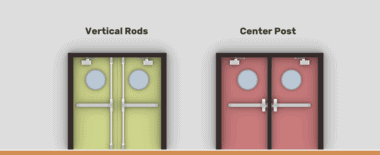
Concealed Vertical Rod Panic Bars
This emergency hardware system is perfect for aluminum doors and features special rods to accommodate the hollow body of the door frame. Because the hardware is concealed internally, there is fewer chances of unwanted intruders using your panic doors as entryways.
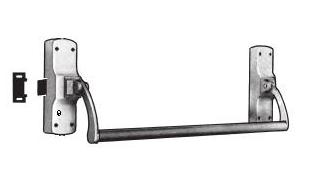
Side Latch Panic Bar
This type of crash bar looks similar. The difference lies in the locking mechanism which is a heavy duty side latch that locks into the strike plate within the door frame. It is not equipped with vertical locking rods.
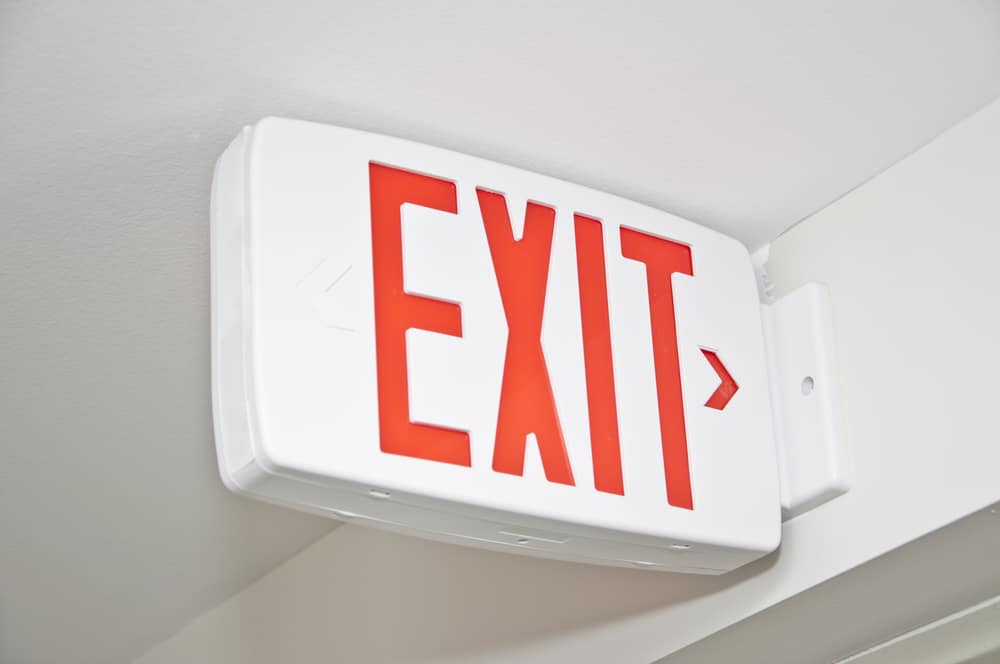
Properly Marking Emergency Exits
Once emergency exits are in place, you must adequately mark them as such and post notifications of their presence and location throughout the building. This can be a challenging task, as fire laws and building codes are very specific.
Your Business Is Secure with Us – GV Lock
Great Valley Lockshop supplies, installs and services an extensive range of commercial doors and hardware and exit devices. Find out more about our advanced commercial security solutions and services at (610) 644-5334 or request a free quote online.


